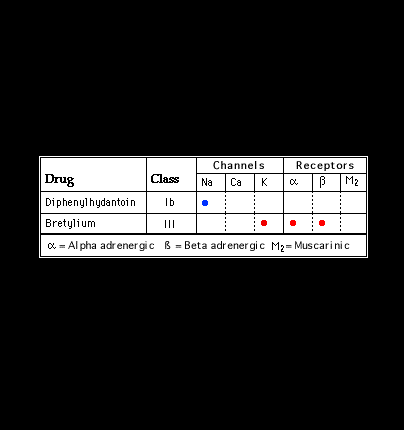
Two additional drugs, diphenylhydantoin (dilantin), and bretylium tosylate, are included in most discussions of antiarrhythmic drugs. Diphenylhydantoin, an anticonvulsant, is used to treat cardiac arrhythmias, particularly in children. It is considered a type Ib drug and does not significantly alter the electrocardiogram. Bretylium tosylate is used intravenously to treat life-threatening ventricular arrhythmias It is classified as a type III drug and also has major effects on sympathetic nerve terminals where it blocks the release of norepinepherine. Like diphenylhydantoin, it does not cause characteristic ECG changes.
